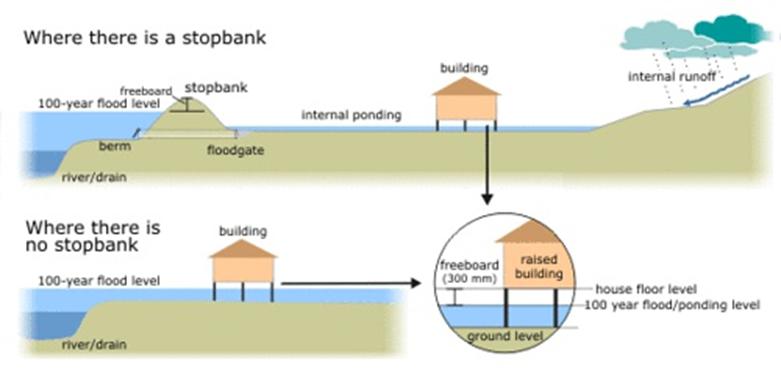2018年6月2日雅思寫作機(jī)經(jīng)小作文十二
2018年6月2日雅思寫作機(jī)經(jīng)小作文十二
參考題目12
The diagrams below show how houses can be protected in areas which are prone to flooding.
圖片

解題思路
【首段】總述圖表比較兩種保護(hù)房子防洪方法 【二段】總述無論是否有防洪堤都能讓處于危險(xiǎn)的房子在地面之上 【三段】分述有防洪堤時(shí)保護(hù)房子的方法 【尾段】分述沒有防洪堤時(shí)保護(hù)房子的方法
范文
The diagrams compare two different methods of defence for homes which are at risk of being flooded. The key difference between the diagrams is that they show flood protection with and without a stopbank. In either case, the at-risk home is raised on stilts above ground level. The first diagram shows how a stopbank acts as a flood barrier to stop river water from flooding homes. The stopbank is a small mound of land next to the river that is higher than the 100-year flood level, and prevents the river from bursting its banks. Nearby houses can be built on stilts to prevent flooding from rainwater, and a floodgate beneath the stopbank can be opened to allow this ‘ponding’ to drain off into the river. When there is no stopbank, as shown in the second diagram, there will be nothing to stop the river from flooding. In this case, the solution is to put buildings on stilts. The height of the stilts is measured so that the floor of the house is 300mm above the 100-year flood level. This measurement is called the ‘freeboard’.
- 12019-02-262019年3月9日雅思寫作小范圍預(yù)測
- 22019-02-122019年2月16日雅思寫作機(jī)經(jīng)預(yù)測
- 32019-01-262019年1月26日雅思寫作小范圍預(yù)測
- 42019-01-172019年1月19日雅思寫作大范圍預(yù)測
- 52019-01-172019年1月19日雅思寫作小范圍預(yù)測





